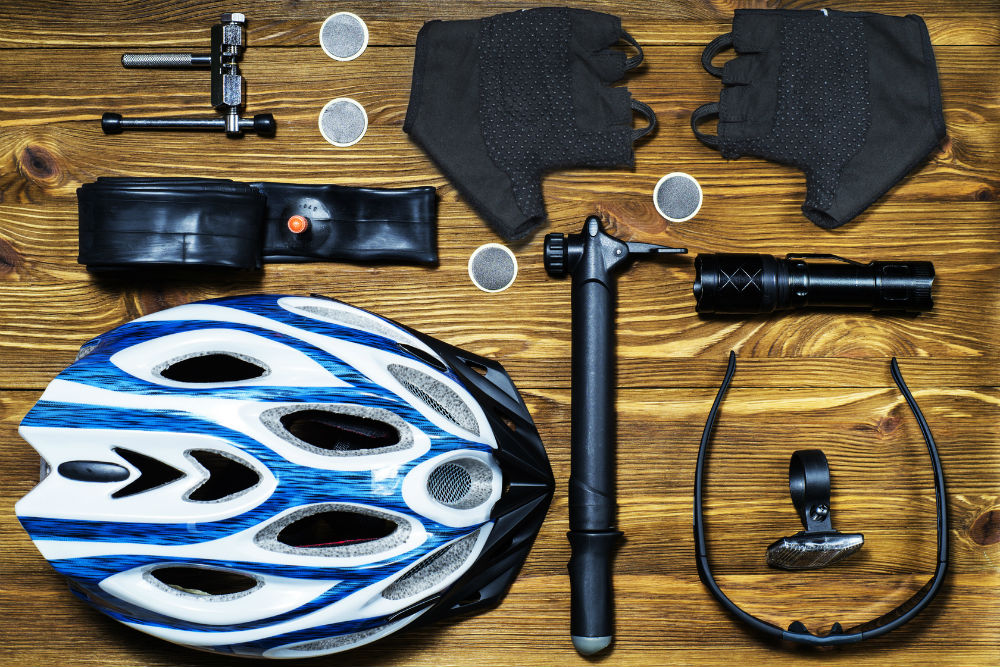- You are here:
- Home »
- Bike Pumps
- » The Mechanics Behind Bicycle Pumps

The Mechanics Behind Bicycle Pumps
Cyclists know the importance of having bike pumps for bike maintenance. They use them on a regular basis to ensure that the tires are in good condition and are able to withstand the challenges of the road and terrain. This way, they can ride the extra mile without worry.
Everybody knows that the purpose of this tool is to provide air pressure to tires. But have you ever wondered how a bicycle pump works?
Do you ever ask yourself how this tool increases and provides the right level of air pressure for your tire? If you are curious to know the answers to these question, read on.
Brief History of Bicycles and the Mechanics Behind Bicycle Pumps
There is no definite day as to when the first bicycle with rubber tires was invented. But most experts assumed that it emerged in the late 1880s when John Boyd Dunlop produced the first inflatable or pneumatic tire in Scotland. The development of the pneumatic tire paved the way to the development of modern bicycles.
Because of this air-filled tire, riding on two wheels became smooth, comfortable, and stable. It made biking more popular to people. However, because air escapes when a tire is punctured, bike pumps are needed.
The First Bike Pump
The first bike pump had a metal cylinder with a metal rod going down the middle of it. This tool forced the air out of the cylinder and pulled in new air whenever the metal rod was pulled up. You can see the same pumping mechanism in modern pumps today.
There are different types of bike pumps, but generally speaking, most of them aim to force the air out of the valve and increase the pressure of the tire to the appropriate level. The only difference between all the types of bike pumps is the method of doing it.
Some require hand pumping while others need foot pumping. The most common method is manual hand pumping.
The Basic Parts of a Floor Pump
To understand the pumping mechanism, you need to learn the importance of every part of the tool. All bike pumps have similar components.
- Body of the Pump – Outside part of the pump.
- Compression chamber – Stores the air inside the pump.
- Hose – Connects the compression chamber and the tire valve together.
- Piston – Compresses or sucks the air into the chamber and forcing the air into the tire. It is connected to the handle, which you have to hold in order to pump up and down
- Inlet valve – A one-way valve inside the chamber that allows air to enter the chamber and prevents it from leaking. It works in conjunction with the piston.
- Outlet valve – A one-way valve inside the chamber that allows air to flow through the hose into the tire and prevents it from flowing out of the tire. It works in conjunction with the piston.
How Does a Bicycle Pump Work?
In order to learn how a bicycle pump works, the entire process is divided into five stages. Just like the parts, most pumps also use the same pumping mechanism manually or without the use of electricity.
Piston rises
When you hold the handle and pull it upward, the piston also rises. This stage sucks in the air, drawing it into the body of the pump.
Air enters the compression chamber
The air in the body of the pump soon enters the compression chamber by pushing the inlet valve open. The air that is contained in the chamber is ready to be decompressed.
Piston lowers
As you pushed the handle down, the piston now lowers. At the same time, the inlet valve closes to prevent air from escaping. This means that the air has no other way to go but into the tire.
Outlet valve opens
The fourth stage opens the outlet valve because of the pressure pushing the air. And since it is a one-way valve, the air flows in one direction out of the chamber, through the hose, and into the tire.
Air inflates the tire
The air inflates the tire as it enters the tire at each downward pump of the piston. Every time you pull the handle upward, the outlet valve closes, preventing the compressed air to flow out of the tire.





